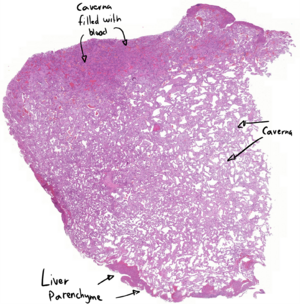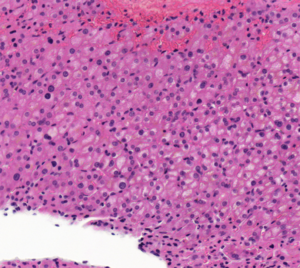42. Haemangioma cavernosum hepatis
Staining: HE
Organ: Haemangioma
Description:
On the bottom of the slide can we see liver parenchyme. The majority of the slide contains empty endothelial-lined caverna. On the top of the slide can we see some caverna filled with blood.
Diagnosis: Cavernous haemangioma of the liver
Causes:
- Genetics
- Oral contraceptives
Theory:
A haemangioma is a benign tumor of the vessels, originating from endothelial cells. They can be found in the skin, nasal cavity and parenchymal organs, especially the liver.
Haemangiomas contain many small cavities called caverna, which are lined by endothelium and can be filled with blood. Rupture of haemangiomas, with resulting haemorrhage, is the most important clinical consequence of this type of tumor.




